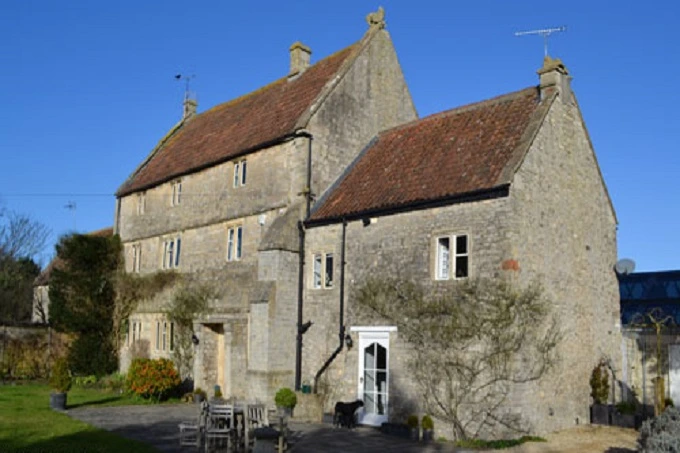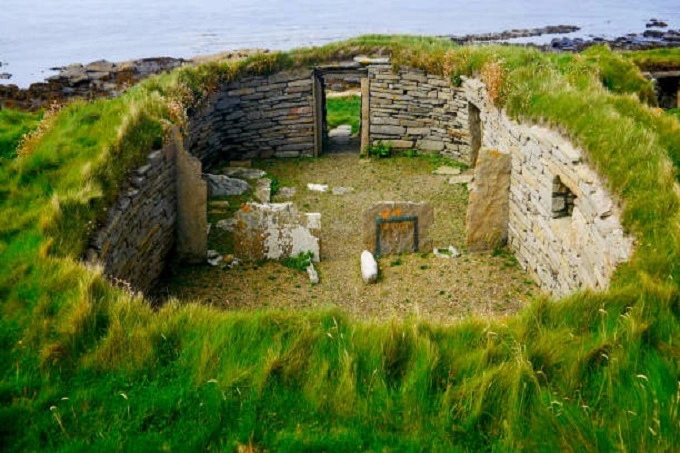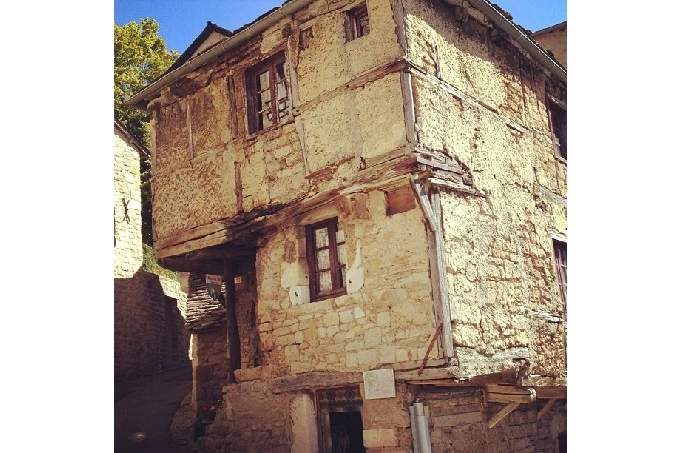Top 10 oldest buildings in the world

When we hear the word “old architectural monuments,” the first thing that comes to mind is imposing buildings such as the Colosseum or the Great Wall of China. In most cases, residential buildings are avoided altogether, but to no avail. It was one thing when the most brilliant minds of their time worked on the building; it was entirely different when regular people constructed it. It is remarkable that such homes have been kept intact and passed down to our generation while many other architectural landmarks have been lost to time. These are some of the world’s oldest homes that have been relatively well preserved, especially considering their ages.
1. Sassi di Matera, Italy

It’s possible that this building is one of the oldest ones still standing today. Even though they are referred to as caves, the dwellings in Sassi di Matera don’t look anything like the typical caves that ancient people lived in when they slept on the rocks.
Sassi di Matera is a peculiar type of house carved into the rocks and inhabited since the Paleolithic period, which is approximately 10,000 BC. UNESCO designated this architectural landmark as a World Heritage Site in 1993 and hailed it as the most outstanding example of an ancient settlement that has been preserved in its entirety anywhere in the Mediterranean region. As a side note, some caves have been converted into contemporary hotels that give guests the impression that they are staying in the Stone Age.
2. Knap of Howar, United Kingdom

The Knap of Howar was uncovered at the end of 1920 when a series of winter storms pushed the structure to the surface after being buried for a considerable amount of time under a thick layer of soil. In addition to being one of the oldest stone houses in northern Europe, it is also one of the most well-preserved examples of Neolithic buildings found in Scotland. Based on the results of a radiocarbon dating study, researchers determined that the construction of this home took place between the years 3,500 and 3,100 BC.
As for the function, it is believed that this building was part of a farm that consisted of several adjacent rectangular buildings with thick walls. These residences are linked to one another by a short passageway, and each has a smoke hole in the roof that lets light into the interior.
3. Jarlshof, United Kingdom

Another ancient architectural monument from Scotland dates back to about 2,700 BC and is a little bit younger. Even though it was inhabited by people as far back as the Neolithic period, this monument wasn’t put to use until around the XVII century, which is one of the most interesting things about it and sets it apart from the majority of other monuments.
Because of this, residential buildings dating back to the Bronze Age in Jarlshof have an oval floor plan and thick stone walls. Jarlshof contains several structures dating back to the Iron Age, antiquity, and the Viking Age.
4. Meymand, Iran

People sought refuge from the heat at that time by constructing their homes underground. On the territory that is now Iran, locals lived according to the same principle many centuries ago. However, instead of digging much deeper into the ground, they dug into the rocks.
The village of Meymand was inhabited 12 thousand years ago, and over the past 3 thousand years, people have been living here permanently. Houses carved into the rocks are combined into a huge architectural complex of more than two thousand rooms. At the moment, there are about 350 houses carved into the rocks on the territory of Meymand.
5. Broch of Mousa, UK

And once more, Great Britain, specifically Scotland, is home to a broch known as the Broch of Mousa. A broch is a circular fortification that dates back to the Iron Age. It is the structure of its kind that has survived to the present day and is the tallest. It is believed that people have lived there continuously since 300 BC. It is also one of the Iron Age buildings in Europe that have been preserved the best.
6. Saltford Manor house, United Kingdom

Because the British Isles, in contrast to the continents of Europe and Asia, practically did not have to face the destruction caused by constant wars, you should not be surprised to find that most of the architectural buildings presented in the article are located in the United Kingdom.
A mansion dates back to around 1149 AD and is located in Saltford, which is in Somerset County. It is believed to be the oldest privately owned residence in the UK that people have continuously occupied. If you did not already know that this structure is over 850 years old when you looked at it, you might think that this house is no older than the 18th or 19th century based solely on its appearance. At least in terms of their architectural designs, private residential buildings have not changed all that much.
7. Cliff Palace, United States

The American researchers who discovered this architectural monument gave the Indian residential complex the modern name of Cliff Palace. This name was given to the architectural monument by American researchers. The Anasazi culture, the ancestors of the Pueblo tribes, carved this architectural monument into the rocks around the same time as some of the other architectural buildings described above. It was created around the eleventh and twelfth centuries.
The floors of the homes in Cliff Palace are constructed out of wooden beams, and most of the exterior walls are made of sandstone. There are approximately 150 rooms, and there is space for approximately 100 people to live in those rooms. They built their houses in a deep canyon, where a kind of roof served as an overhanging rocky canopy. Without this interesting idea of the monument’s creators, these houses would not have survived to the present day as well as they have.
8. Kirkjubøargarður, Faroe Islands

Kirkjubøargarður, also referred to as Roykstovan, is a garden found on the Faroe Islands, a self-governing region of Denmark. This house, which dates back to when the islands were first settled, is part of a historic farm that dates back 900 years.
It does not appear to be as old as the houses that are located above it for one simple reason: Kirkjubøargarður is constructed of wood, whereas the houses that are located above it are constructed of stone. This fact contributes to the farm’s reputation as having one of the oldest residential wooden houses in Europe.
9. Jeanne’s House, France

In honor of Jeanne, the last known homeowner, it was given the name “Jeanne’s House” when it was constructed in Severac-le-Chateau during the XIVth century. Because the space on the house’s first floor is so much smaller than the space on the upper floors, this home appears to be one of the most absurdly designed homes.
The problem is that taxes in Aveyron, where the house is located, were computed based on the portion of the land occupied by the first floor of the building. It is widely believed that the building owner created a smaller first floor to pay less taxes by making the second and third floors significantly larger than the first.
10. Shunet el-Zebib,Egypt

One of the oldest buildings in Egypt and one of the oldest mud brick structures still standing is Shunet el-Zebib. The building was erected as a royal memorial to King Khasekhemwy, who ruled during the second dynasty of ancient Egypt.
The structure is divided into two main parts: the King’s underground tomb and a complex above ground where Khasekhemwy’s supporters might assemble to venerate their late leader.
It is thought that Shunet el-Zebib, which was constructed somewhere about 2750 BCE, was an immediate forerunner of Egypt’s well-known pyramids. Khasekhemwy’s successor Djoser, who was inspired by Shunet el-design, Zebib’s built the Saqqara Step Pyramid (also known as the Pyramid of Djoser), the first genuine pyramid.
Archaeologists began working on a project to revive Shunet el-Zebib in about 2007.




